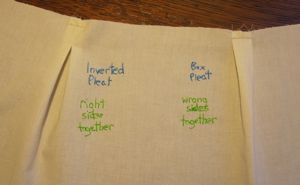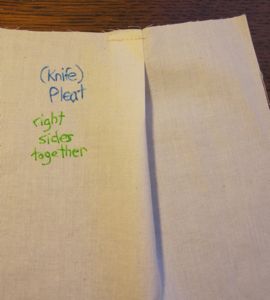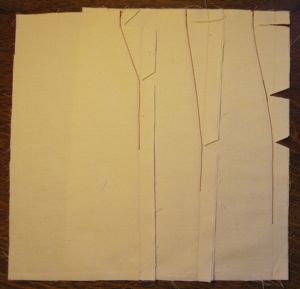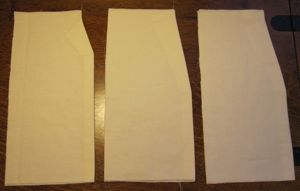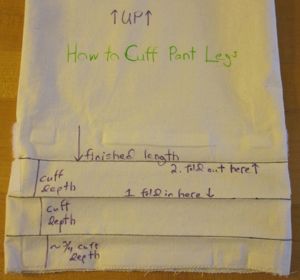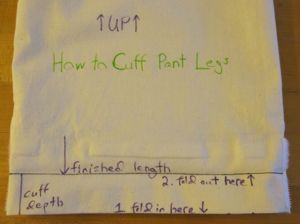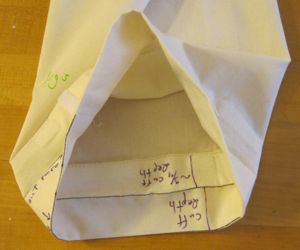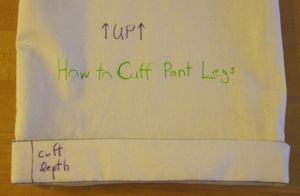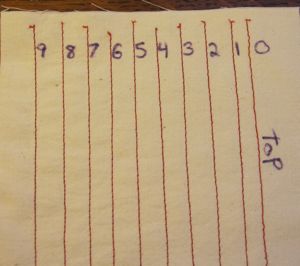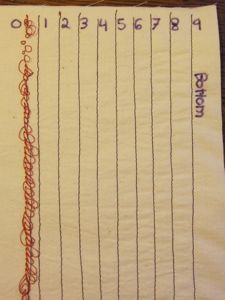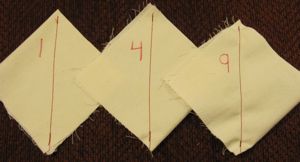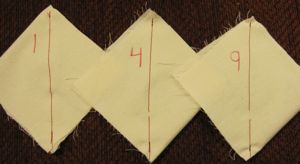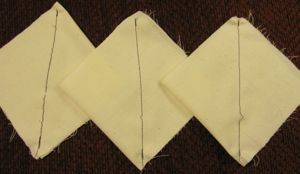I haven’t done much of my own sewing recently, and it’s because (as I have mentioned offhand) I am sewing curtains for a client. Big curtains. Big, thick curtains. They are insulated, with a layer of fabric toward the window, some padding, a layer of mylar, some more padding, and a layer of fabric toward the room. Fortunately all but the last layer of fabric come already attached together, but the whole shebang is still incredibly heavy and awkward. With just my regular machine-in-cabinet, I can’t do them at all. My trusty 1984 Singer can sew them, but there’s no chance of a straight seam with the curtain flopping around dragging itself all crookedly. They’re big enough that rolling them up out of the way on the side only increases the problems fore and aft, and there’s no way to roll them up in both directions simultaneously.
My solution, after crying, was to move a drop-leaf table behind my sewing machine and a filing cabinet to the left in front of it. I also have an end table/plant stand in front of the filing cabinet; it is significantly shorter but still a lot taller than a chair, and while something taller than it would be better, it is still an improvement over just the filing cabinet. The filing cabinet, end table, and I hold the curtain before it goes through the machine, and the table catches it as it comes out the back.
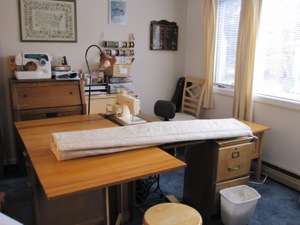
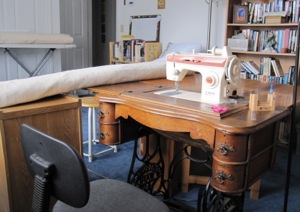
This improved the situation immensely. I also had to lower the thread and presser foot tensions to avoid skipped stitches and make the curtains feed more smoothly.
I later talked to a quilter and she told me she has a table behind her machine and a table to the left of her machine. If I hadn’t exhausted all the appropriate-height furniture in the house (well, there’s the dining table, but that won’t fit in the sewing room now), I would be extending my support system more to the left. Which would leave no floor space on which to work, but you can’t have everything. I do feel somewhat like an executive behind a big desk.
Anyway, I’m just sharing in case anyone out there has to sew big, heavy items, and was looking for others’ experience. I’m looking forward to having space in my sewing room again, and catching up on my own sewing projects!
